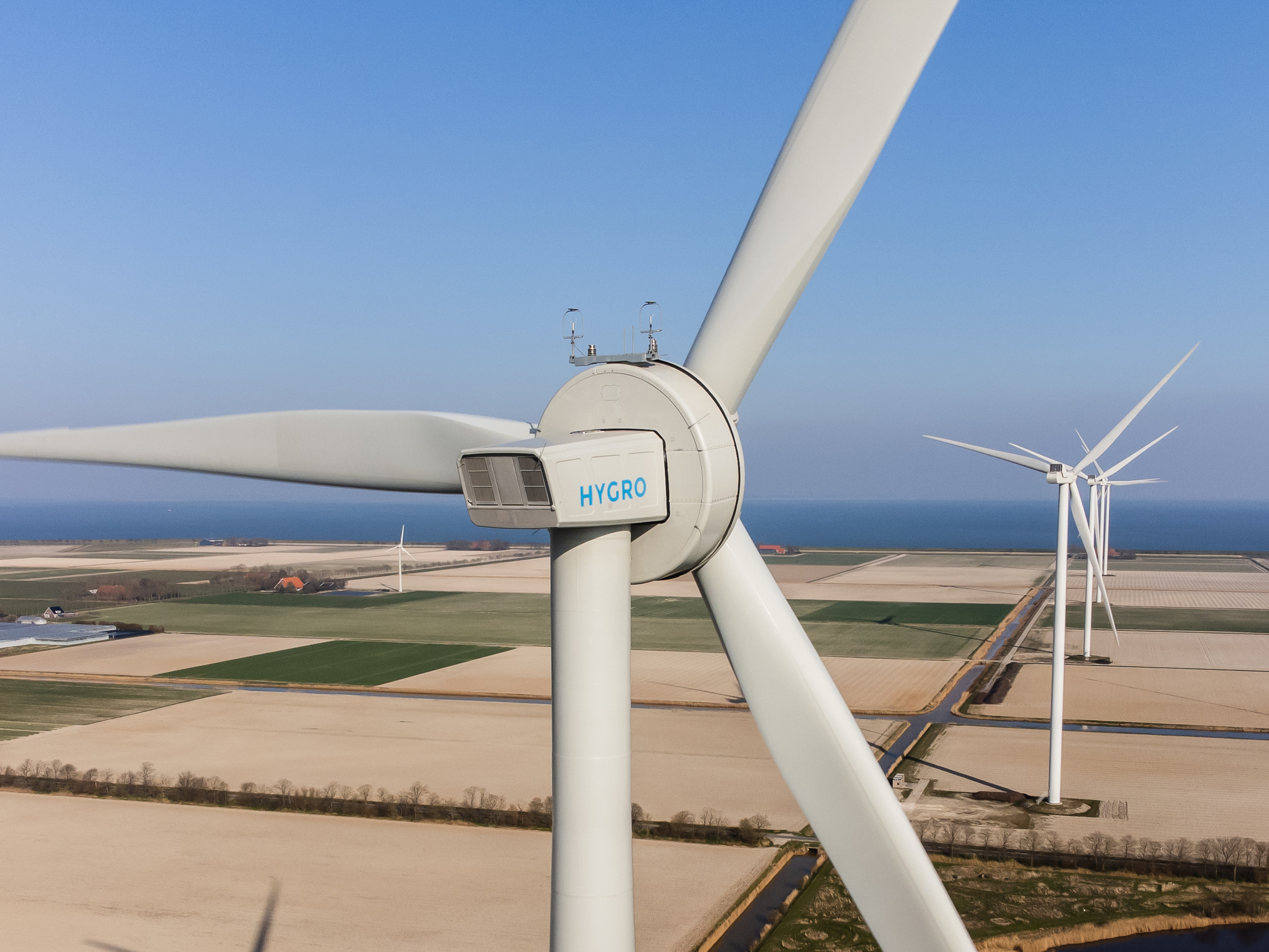Green hydrogen is an important ingredient for energy transition and reducing CO2 emissions. Financial incentives from the government, including from GroenvermogenNL, support this transition.
HYGRO was the first company in the world to launch the 'hydrogen mill' concept; a wind turbine with integrated electrolysis to produce hydrogen directly at the mill. With hydrogen as the primary energy carrier, the design of a wind turbine and that of wind farms will eventually change. Electrolysis makes wind energy more (cost) efficient than electricity.
Jan Willem Langeraar, co-founder HYGRO: "This project will not only demonstrate the technical possibilities for an efficient chain and affordable refueling stations, but above all it will show that sustainable hydrogen can become competitive with diesel under the current rules. It is important here that the government continues to come up with sufficient incentives for parties who want to purchase hydrogen-powered trucks. For example, through the Dutch 'AanZET' subsidy. Scaling up will enable further cost reductions that will eventually make the transition happen naturally."
The development of integrated hydrogen production at wind turbines and deliveries of hydrogen to filling stations during this project will provide enough hydrogen in the North Holland region to run 50 to 80 hydrogen electric trucks on green hydrogen. This is equivalent to 2,500 to 5,000 hydrogen electric passenger cars driving 20,000 kilometers per year and a similar number of hydrogen electric generators for use on construction sites. The result of this project is a reduction in costs in the hydrogen supply chain and faster growth in the use of hydrogen in mobility.
By simultaneously scaling up hydrogen production and distribution through filling stations, with the use of hydrogen by hydrogen electric trucks, passenger cars and construction equipment such as generators, for example, the cost of both vehicles and hydrogen supply will continue to fall rapidly. Therefore, in the coming years, the share of hydrogen mobility will increase significantly leading to reduced CO2 emissions, while also avoiding noise, NOx and particulate matter emissions. The project provides a glimpse into the energy infrastructure of the future.

The award of this grant marks the first steps toward integrating hydrogen production with wind turbines. Several parties have committed to the project by signing a Letter of Intent (LOI).
Greenchoice will ensure that green hydrogen can be made even at windless times with plenty of solar energy. In addition, the grant will demonstrate that through an integrated approach to production, high-pressure storage and road distribution, affordable hydrogen refueling stations can be realized. The first hydrogen filling station will be at AVIA Marees' AVIA Mobility Square in Wieringerwerf.
With funding from the Regiodeal Maritiem Cluster 'Kop van Noord-Holland', the AVIA Mobiliteitsplein in Wieringerwerf will be linked to hydrogen production at the wind turbine through a special pipeline, to be constructed with the firm SoluForce and Visser & Smit Hanab.
The project also provides for three satellite stations in North Holland. The exact locations are still being determined together with AVIA Marees and will depend in part on customer requirements for hydrogen mobility.
Meewind, which is a co-investor in the HYGRO turbine through its Regional Sustainable Green Fund, is looking forward to this next phase of development.
TNO is responsible for validating the expected energy savings and efficiency improvements in the chain from wind to wheel. TNO is analyzing the efficiencies HYGRO expects to achieve in electrolysis through pulsed power and the efficiencies in road hydrogen distribution using the 'iBundles' developed by HYGRO. TNO will disseminate the research results and learning experience widely in the Netherlands and more widely in Europe through organizations such as Hydrogen Europe Research.
Cluster leader Electrolysis at TNO, Lennart Van der Burg on the hydrogen windmill: "This is a significant amount of subsidy within this project. It is important that the data from our research also become available to other organizations within the hydrogen chain. Broad knowledge sharing is of absolute importance to accelerate electrolysis development. Currently, very little practical data is publicly available. For example, on the performance of the electrolyser under different conditions. We have a list of more than 20 parameters on which we want to monitor the electrolyser."